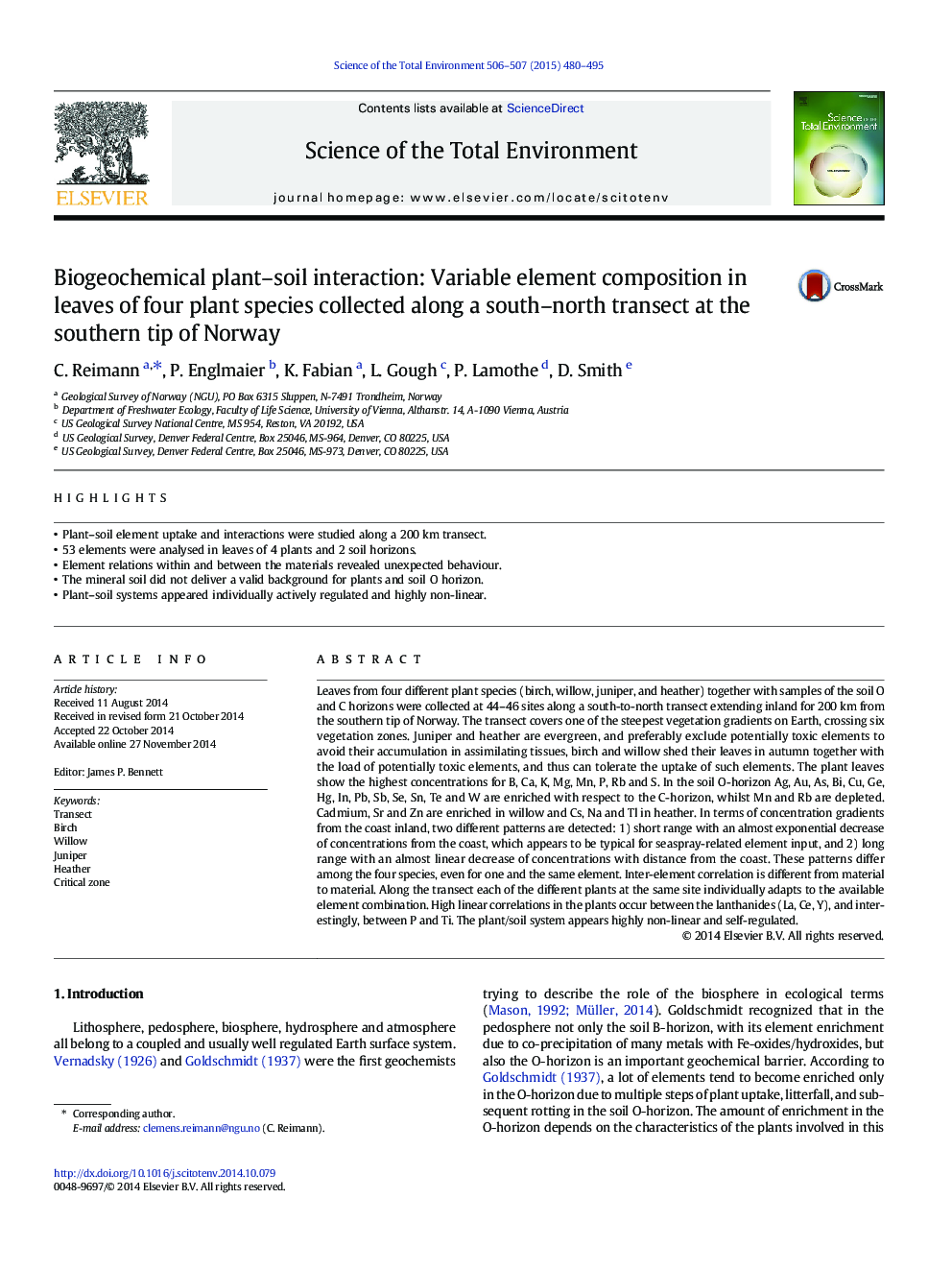| Article ID | Journal | Published Year | Pages | File Type |
|---|---|---|---|---|
| 6327759 | Science of The Total Environment | 2015 | 16 Pages |
Abstract
Leaves from four different plant species (birch, willow, juniper, and heather) together with samples of the soil O and C horizons were collected at 44-46 sites along a south-to-north transect extending inland for 200Â km from the southern tip of Norway. The transect covers one of the steepest vegetation gradients on Earth, crossing six vegetation zones. Juniper and heather are evergreen, and preferably exclude potentially toxic elements to avoid their accumulation in assimilating tissues, birch and willow shed their leaves in autumn together with the load of potentially toxic elements, and thus can tolerate the uptake of such elements. The plant leaves show the highest concentrations for B, Ca, K, Mg, Mn, P, Rb and S. In the soil O-horizon Ag, Au, As, Bi, Cu, Ge, Hg, In, Pb, Sb, Se, Sn, Te and W are enriched with respect to the C-horizon, whilst Mn and Rb are depleted. Cadmium, Sr and Zn are enriched in willow and Cs, Na and Tl in heather. In terms of concentration gradients from the coast inland, two different patterns are detected: 1) short range with an almost exponential decrease of concentrations from the coast, which appears to be typical for seaspray-related element input, and 2) long range with an almost linear decrease of concentrations with distance from the coast. These patterns differ among the four species, even for one and the same element. Inter-element correlation is different from material to material. Along the transect each of the different plants at the same site individually adapts to the available element combination. High linear correlations in the plants occur between the lanthanides (La, Ce, Y), and interestingly, between P and Ti. The plant/soil system appears highly non-linear and self-regulated.
Related Topics
Life Sciences
Environmental Science
Environmental Chemistry
Authors
C. Reimann, P. Englmaier, K. Fabian, L. Gough, P. Lamothe, D. Smith,
